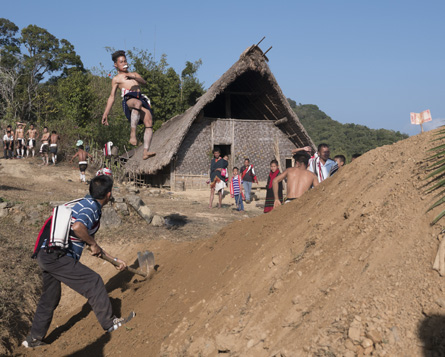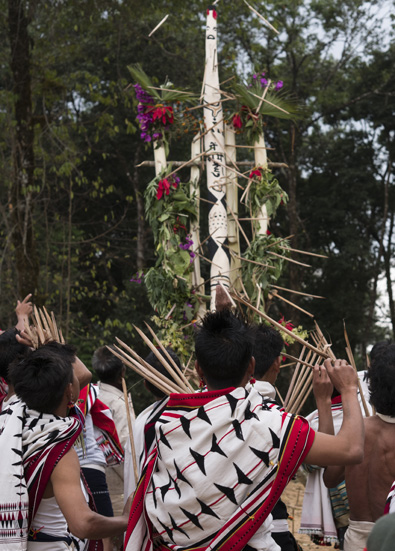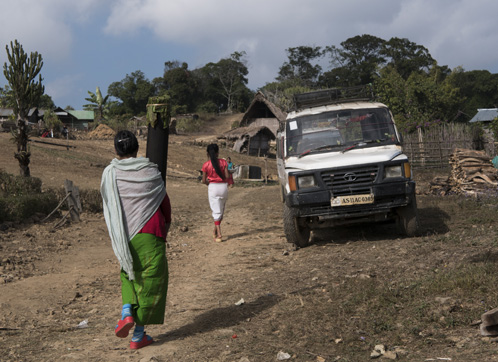These photographs were taken at a relatively new village, in Assam, Northeast India. The community is celebrating the Zeme Naga festival of the winter solstice: hgangi. As the households around them converted to Christianity after the Second World War, a handful of families decided it would be better to move up the hill and start a new settlement rather than give up their existing beliefs (which could be termed animism). This is the settlement pictured.
I came to study the Zeme Nagas through an interest in the archive of their longest standing ethnographer, Ursula Graham-Bower. A minor figure in the history of anthropology, Graham-Bower never received a PhD but became better known as ‘the Jungle Queen’, an epithet she gained after leading an irregular force of Naga scouts in the Second World War, much like Edmund Leach fought with the Kachin in Burma. Graham-Bower was an exceptional ethnographer with a fine eye for detail, no doubt helped by the remarkable amount of time she spent in the field (between 1937-1945). My research focused on a oneiric fame taboo once prevalent amongst Zeme communities that Graham-Bower documented in her fieldnotes.
Image 1.
Jumping over the hazoa (a central stone in the village) is a key rite in the winter solstice. The villagers left behind their old hazoa in the Christian village, once an important symbol of vitality under which head hunting trophies were buried. Many of the younger men featured in the photographs do not belong to this particular village but have come to take part in this festival during their winter break from colleges and universities, a self-conscious attempt to preserve traditions now only practiced by a handful of animist communities.
Image 2.
All the men gather to throw darts at the mpe(the tall human representation) in order to ensure good fortune for the new year. The mpecan be made only from the tingsap ching(king tree) and is garlanded and protected with multiple taboos prior to its destruction by darts.
Image 3.
Women stay inside for the majority of the festival in order to maintain certain taboos dividing the sexes. They are not invited to take part in the ritual drinking and their labour is instead channeled into the preparation of festival’s requisite feasts.
